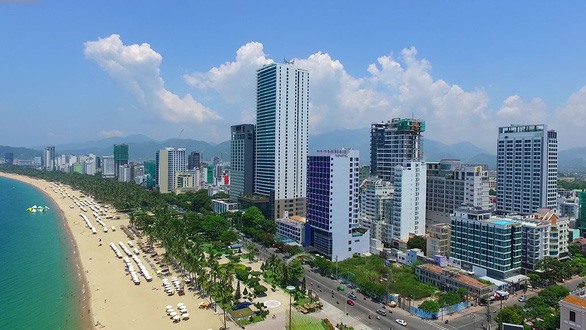 Opinion
Opinion

Nguyễn Văn Lộc, President of the Khánh Hòa Architects’ Association tells Tuổi Trẻ (Youth) newspaper that seafront tall buildings have become a nuisance to locals in Nha Trang
 |
| A view of Nha Trang coastal city. — Photo tuoitre.vn |
Nguyễn Văn Lộc, Former Director of the Khánh Hòa Architects’ Association tells Tuổi Trẻ (Youth) newspaper that seafront tall buildings have become a nuisance to locals in the province’s Nha Trang City
What is the current status of large construction projects in the central coastal city of Nha Trang?
The mushrooming of tall buildings and hotels in Nha Trang has become a nuisance to many local residents and visitors. Many project owners have ignored the city’s regulations on construction planning and have disregarded the Prime Minister’s general planning scheme for the city.
The city’s two main thoroughfares, Trần Phú and Phạm Văn Đồng, are the longest coastal streets. In accordance with a master plan which was approved by the then Prime Minister [Nguyễn Tấn Dũng] on September 25, 2012, the height of tall buildings along the coast is capped at 40 stories and the construction density is set at no more than 40 per cent. However, these laws have been repeatedly violated, particularly in terms of construction density along Trần Phú and Phạm Văn Đồng. In many localities, the construction density was 60 per cent. In some, density climbed as high as 70 per cent.
What are the consequences of regulation breaches in Nha Trang?
Unlawfully high construction density and the addition of excessively tall buildings have made the city ugly. For example, along Trần Phú Street, there is no open space between the tall buildings which are built directly next to each other.
With such disregard for construction laws, the Nha Trang People’s Committee has recently released a new ban on the construction of tall buildings in the city. In my opinion, it is better late than never, so I support the decision.
When construction density is so high, it is naturally coupled by high population density. As a result, the buildings have destroyed the city’s infrastructure planning as well as its social infrastructure including transport, electricity supply, water supply, hospitals and schools.
Though these are serious problems, city authorities have not yet come up with effective measures. In my opinion, this is a good lesson for other cities to draw on in their urban planning.
Do you have any suggestions for how other cities can avoid such a problem?
Starting during my time as director general of the Khánh Hòa Department of Construction, I told my colleagues that I admired the planning of the Nha Trang City Authorities before 1975. I especially liked the construction style and the flow of the low buildings along the sea and the high buildings behind them. I was told by many old residents of Nha Trang that the building regulations were inherited from the time of French domination.
Then following the 1975 liberation of South Việt Nam, Nha Trang city authorities have all agreed on the principle that the density of construction projects along Trần Phú Street must maintain a certain distance between each building. High rise building blocs must not line the road leading to the sea so they do not block the sea view of the houses behind them.
However, since 2012, many tall buildings have been erected without paying heed to the city’s old construction law. A row of tall high-rises have blocked the view for people living behind them. More seriously, quite a few high-rises have breached the height limit which was written in the law.
With the rapid development of 40-storey buildings along the shore, what will happen to the people living behind the high-rises? There is, as of now, no answer to this question. — VNS



.jpg)




.jpg)
